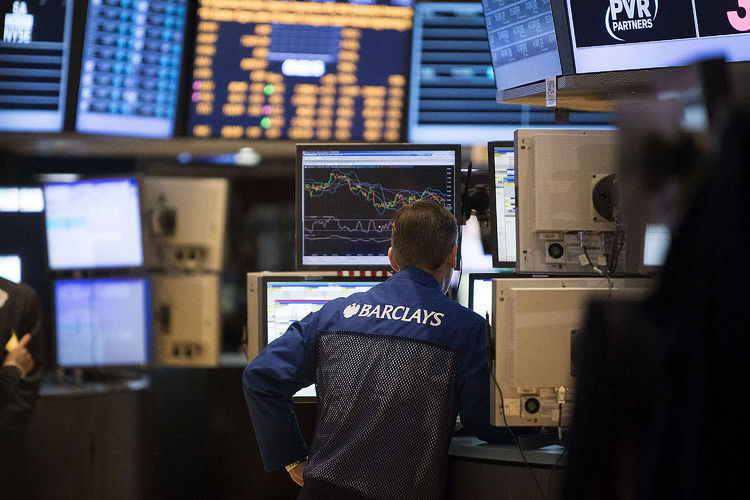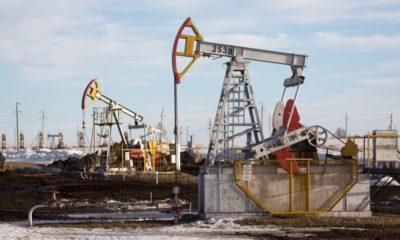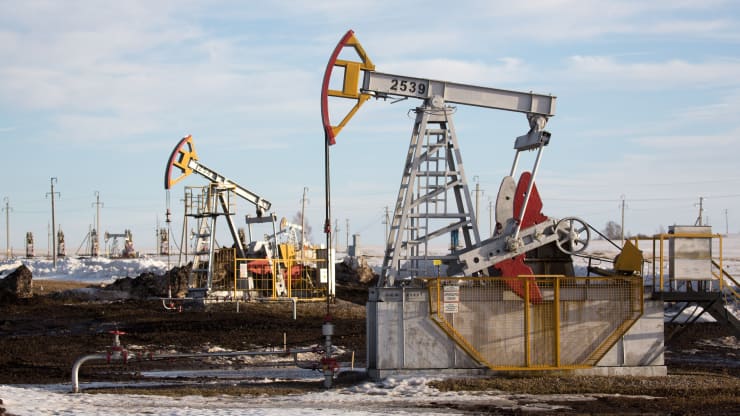Markets stewed in their own juices overnight leaving equities and currencies and precious metals trading in noisy ranges, but ultimately finishing not too far from where they started. The big mover overnight was oil, which had another impressive rally, this time helped along by a Reuters story where France’s President Macron was overheard telling US President Macron at the G7 meeting, that a call to the UAE had informed him that both they and Saudi Arabia were maxed out on production capacity.
That is probably the last thing the world needs to hear right now, given that Saudi Arabia and the UAE are regarded as the world’s two available swing producers at the moment. The UAE released an official response stating that they were indeed near-maximum capacity, although this was crouched as within the context of its allowable OPEC+ quota. If true, President Biden’s upcoming cap-in-hand trip to Saudi Arabia may have lost one of its raisons d’etre.
The pain doesn’t stop there for energy markets. Along with reduced Russian gas flows to Europe, Libya also announced it may declare a force majeure on over half of its daily production shortly. Ecuador said over the weekend that it may cease production entirely due to domestic cost-of-living protests, something we’re going to see a lot more of frontier/emerging markets this year sadly. By my rough calculations, Ecuador and Libya will add up to around 1.1 million barrels per day. Not a deal-breaker normally, but much more so in these abnormal times. The reality that energy price inflation isn’t going anywhere anytime soon may partially explain the modest retreat by equities in the last 24 hours.
US data was mixed overnight. US Durable Goods surprised to the upside, rising by 0.70% MoM in May, well above the 0.10% rise forecast. Even the numbers ex-defence and transport (read Boeing), exceeded forecasts easily. In contrast, US Pending Home Sales came in worse at -13.60% YoY for May, while the June Dallas Fed Manufacturing Index slumped to -17.70. With US and German yields also rising overnight, the rally in oil prices, and the Durable Goods, in particular, forced the FOMO gnomes of Wall Street to reassess the lower terminal Fed Funds excuse to buy equities.
We could still see the equity bounce continue, though. Markets are in a schizophrenic frame of mind day-to-day, but underlyingly, are still desperately keen to buy this medium-term dip. Additionally, it is the month and quarter-end this week, and that will prompt no small amount of portfolio rebalancing by institutional investors globally. We should expect the back-and-forth chop-fest to continue this week in the equity space, and possibly, the currency space.
In Asia today, the calendar is as empty as I have seen it for a while. Japan’s 2-year JGB auction and Malaysian PPI are unlikely to move the needle. ECB President Lagarde and Chief Economist Lane both speak this afternoon, and we can expect their comments to be dissected for clues on both monetary policy direction and their anti-fragmentation tool to manage bond spreads between members. Fed Chairman Jerome Powell also speaks tomorrow at an ECB event, along with Ms Lagarde, which could up the ante on mid-week volatility.
In the US, most attention is likely to be on Wholesale Inventories and the Case-Shiller House Price Indexes. Markets are becoming nervous that corporate America may end up with lots of inventory they can’t sell, and the nerves around the US housing market are well known. Given the poor Dall Fed Manufacturing Index overnight, the Richmond Fed Manufacturing Index may garner more attention than usual as well, especially if it is week.
Overall, it looks like Asia will settle for a sideways session, with equities content to mirror Wall Streets’ direction, and currencies, precious metals and cryptos staying comatose. A lack of data in Asia today leaves markets vulnerable to headline bombs on the news ticker.
Asian equities ease with Wall Street.
A surprisingly robust US Durable Goods number prompted a few doubts around the lower terminal Fed Funds rate so buy equities strategy overnight. The soft US pending home sales and Dallas Fed manufacturing data may also have sparked recession isn’t good for equity’s thoughts. With sentiment wavering, Wall Street lightened up some recent longs, sending the equity markets to a negative close. The S&P 500 eased 0.30% lower, the Nasdaq fell by 0.83%, and the Dow Jones fell by 0.20%. US futures are holding steady in Asia this morning.
Across Asia itself, markets appear content to follow Wall Street’s lead, as they have done recently, with markets locally moving lower in response, although not markedly so. Japan’s Nikkei 225 is unchanged, with South Korea’s Kospi down just 0.10%. In Mainland China, the Shanghai Composite and CSI 300 are 0.05% lower. In Hong Kong, the Nasdaq-following Hang Seng is down 0.75%, retracing some of yesterday’s rally.
In regional markets, Singapore is 0.20% lower, with Taipei slipping by 0.75%, reacting to an impending 8.40% increase in electricity prices announced yesterday. Kuala Lumpur is 0.10% lower, Jakarta had fallen by 0.60%, Bangkok is 0.15% lower, and Manila has eased just 0.10%.
Australian markets are bucking the trend by rising today. Although most sectors are lower, resources have rallied, perhaps on statements from Shanghai yesterday declaring victory over its latest Covid-19 outbreak. Less restrictive China equals they will buy more resources I suppose, until their next outbreak. The ASX 200 is 0.50% higher, while the All Ordinaries is 0.40% higher.
Europe has a mixed session overnight, modest gains with Scandinavian markets outperforming, Stockholm and Helsinki rising by over 3.0%. I am assuming that is because the leaders of Turkey, Sweden and Finland are meeting to thrash out their differences and open NATO membership for the latter two. With Asia in wait-and-see mode today and oil prices rising sharply overnight, Europe is probably going to start its session on the back foot. Month and quarter-end rebalancing flows will potentially distort the price action in both the US and Europe markets this afternoon and for the next couple of days.
US Dollar mixed.
A rise in US yields overnight boosted the USD/JPY slightly, but elsewhere, the greenback continued its modest retreat versus the G-20 space as currency markets showed very little reaction to the US data. The dollar index eased 0.17% lower to 103.95, where it remains in Asia. The charts do suggest the downward correction still has more to run, with a failure of 103.50 signalling a deeper correction. The dollar index has support at 1.0350 and 102.50, with resistance at 105.00 and 1.0570.
Elsewhere, currency markets are comatose in Asia, with both DM and Asian currencies almost unchanged from their overnight closes.
EUR/USD rose by 0.25% to 1.0580 overnight, where it remains in Asia. It continues showing resilience as the Russian natural gas exports to Europe situation deteriorates, but initial resistance at 1.0600 and 1.0650 remains challenging. Support is at 1.0450 and 1.0400. Sterling was unchanged at 1.2275 overnight once again, unmoved in Asia. GBP/USD has initial resistance at 1.2360 and 1.2400, with support at 1.2200, 1.2160, and then 1.1950.
USD/JPY edged 0.25% higher to 135.45 overnight as US yields moved slightly higher. It has fallen slightly to 135.30 in Asia. USD/JPY has support at 134.25 and 132.00, with resistance at 136.65 and 138.00. The short-term direction remains at the mercy of US yields, although a fall by the US 10-year through 3.0% could provoke an unwinding of USD/JPY longs.
Asian currencies continued to trade sideways overnight, mostly booking some small gains, but overall, remaining near recent lows versus the US Dollar. That suggests that the rise in investor sentiment in equity markets is yet to spill out into the broader EM complex. The Chinese Yuan has had zero reaction once again to another large liquidity injection by the PBOC this morning. Markets are clearly anticipating the PBOC draining all the liquidity via the repo next week after the quarter-end has passed. Reserves data suggests that Asian central banks have been busy selling US Dollars recently to smooth out currency volatility, but it looks like any consistent rally is going to need a big US Dollar move lower.
Oil prices rally on supply concerns.
Oil prices rallied once again overnight, as the Reuters story outlined above over Saudi Arabia and UAE capacity constraints, as well as disruption of supplies from Libya and Ecuador, overrode US recession concerns. Another lesson is that markets ignore crude futures backwardation at their peril when trying to pick a top in oil prices. Brents’s backwardation actually widened during the sell-off early last week.
Brent crude rose by 2.60% to $115.40 overnight, gaining another 0.90% to $116.300 a barrel in Asia today. WTI rose by 2.30% to $110.00 overnight, rallying another 0.80% higher to $110.70 a barrel in Asia. The rhetoric around declaring victory in Shanghai over omicron seems to be prompting Asian traders to continue buying this morning.
Notably, Brent crude tested and held its rising longer-term support line, today at $108.00, in the early part of last week. Nor was its 100-day moving average (DMA) tested either. That is a technical development that should be respected. Brent crude has support at 111.35, its 100-DMA at $109.40, and the six-month support line at $108.00. It is testing resistance here at $116.50, and a daily close above here would clear the way for a retest of $120.00 a barrel.
WTI’s technical picture has improved markedly overnight, regaining its rising 2022 support line, today at $107.50 a barrel and initial support. A close above $111.25 this evening clears the way for a larger rally to $116.00 a barrel.
Gold fades overnight.
Gold attempted to rally overnight as the G-7 announced a ban on Russian gold imports. That was a rubber stamp exercise though, and although gold climbed intraday, it faded ahead of $1840.00 an ounce. It then proceeded to give back all those gains, finishing 0.25% lower at $1823.00 an ounce. Although US yields rose slightly, the US Dollar was generally slightly weaker overnight, making the price action by gold even more disappointing. It appears that the downside is increasingly gold’s path of least resistance.
Gold has resistance at $1840.00, $1860.00, and $1880.00, the latter appearing an insurmountable obstacle for now. Support is at $1805.00 and then $1780.00 an ounce. Failure of the latter sets in motion a much deeper correction, potentially reaching $1700.00 an ounce. On the topside, I would need to see a couple of daily closes above $1900.00 to get excited about a reinvigorated rally.




































